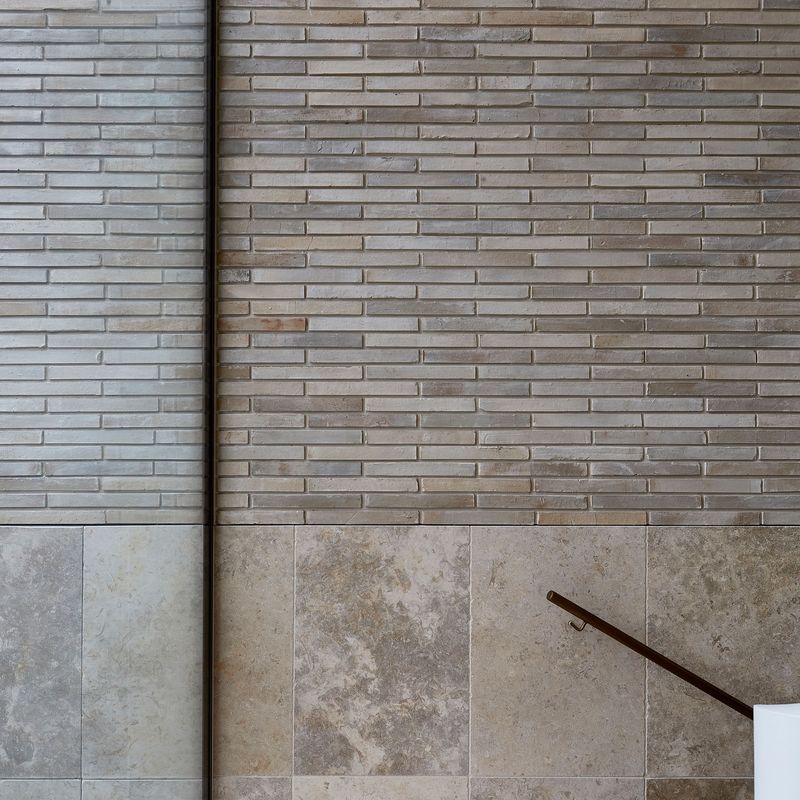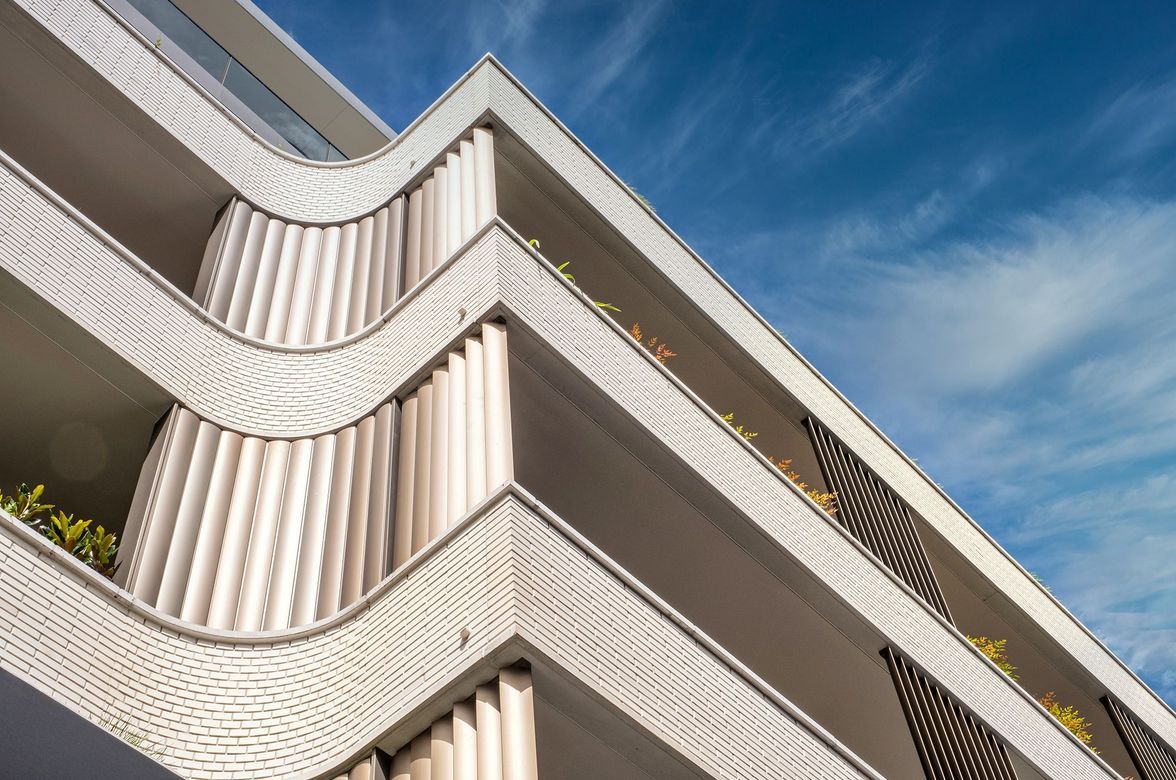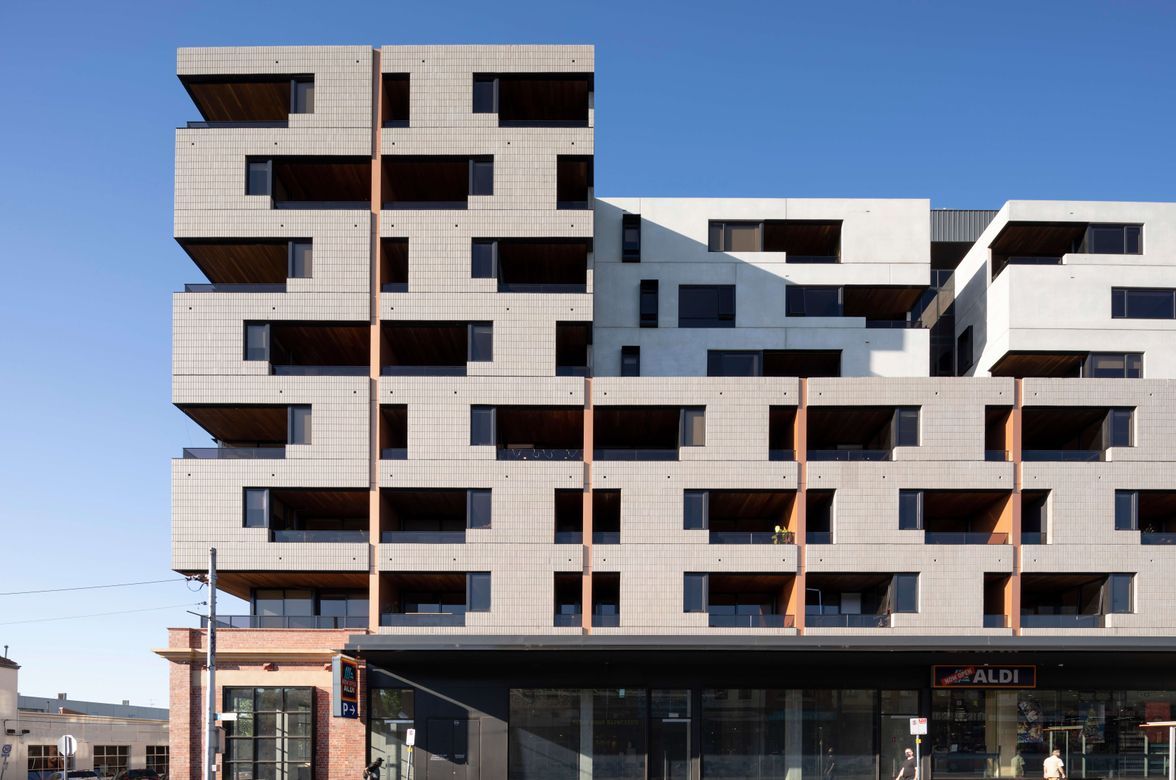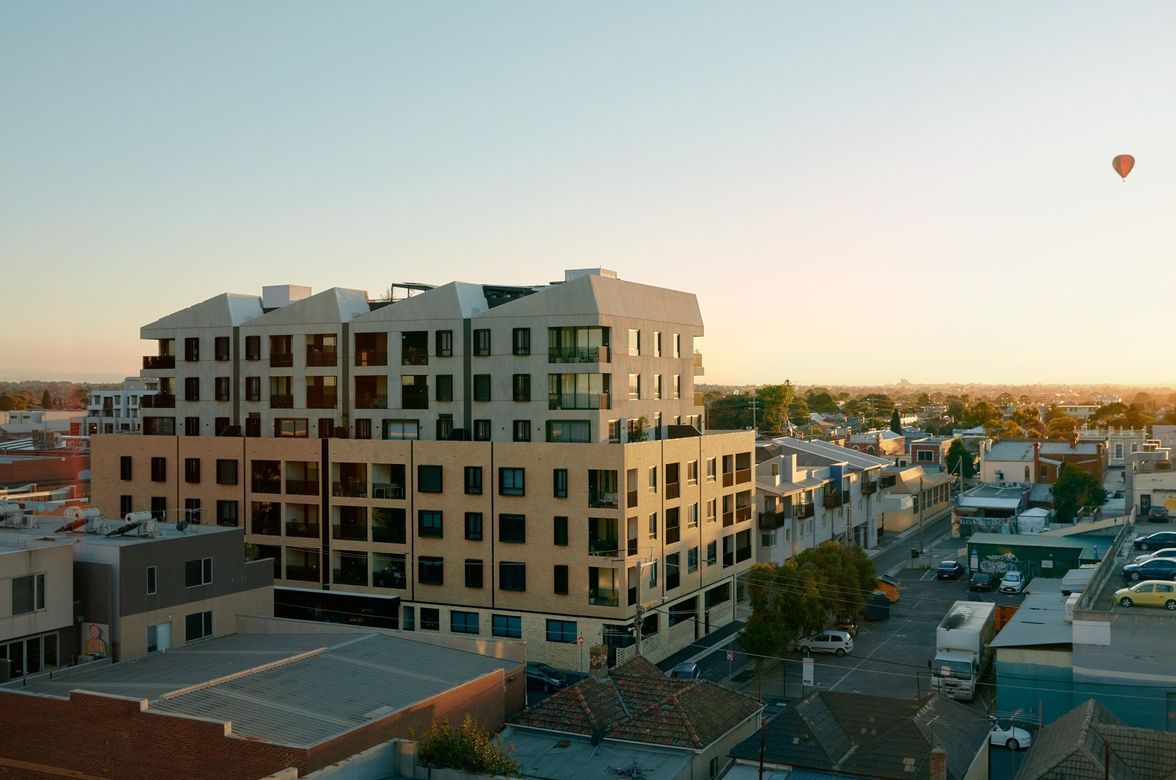Divided House celebrates the imperfect, handmade nature of Krause Emperor bricks
Divided House in Richmond is as clever as it is practical. Just as its name suggests, its two double-storey brick forms are divided, yet seamlessly tied, via a single-storey lean-to style link, accommodating the connecting point of the two spaces: the kitchen, ever the heart of the home.
This incredible, well-considered design by Jon Clements, director, of Jackson Clements Burrows Architects is home to Jon, Elisa (his wife), and their two sons.
Ever mindful that their housing needs will continue to change, Jon created a flexible design to meet them:
“We thought, if we love the house and location, and have been here for a long time, why not design it so it could be subdivided in the future, and split into two houses if needed? So down the track, if we want to stay here but don’t want to be in a larger family house after the kids leave home, we could split it in half and rent or sell the second dwelling,” explains Jon.
Pure design genius.
What began, Jon describes, was a “slow burn”: A planning process of over 18 months, followed by a construction period of over three years.
A definite labour of love for Jon and his team. Because this was a build with a difference.
And it shows.
What made the difference is that Divided House wasn’t simply designed, documented, and built. It was an ongoing process of design during construction built through a close collaboration between a group of skilled professionals – builders, carpenters, landscape architects, and, of course, Jon.
“We explored different design opportunities as they emerged and I worked really closely with the carpenters. During the finishing stages, I worked onsite for a couple of hours each day, so there’s a lot of handmade experimental details that came out of that hands-on process,” says Jon.
Without a doubt, this way of working through the process as opposed to letting the process define it, and the high-quality detail that’s been achieved, shines through.
As does Jon’s passion for the making of buildings, carpentry, and the crafting of materials.
Locally-made Krause bricks in Grey/Ghost are the hero of the natural palette, setting a beautiful tone to the house. Richmond is full of the late 1800s and early 1900s houses, many of them pressed bricks. But Jon wanted something handmade that looked aged from the outset.
“We put a lot of time into finding the right brick. I went down and met with Klynton Krause and explored their bricks, and that was a really important part for us because the bricks were responding to the heritage setting - I didn’t want to use the predominantly red brick that was in the street and ultimately I decided to reference the creams in the polychrome details of a neighbouring house,” comments Jon.
Selecting the bricks was just the beginning. The real magic was in how the bricks were laid.
“I had ideas about angled structural walls and how they might employ a different way of laying bricks to recognise the change in direction – that’s where the stitched detail came from. Rather than it just being an angled wall, the bricks continued in a perpendicular direction to the wall, stepping their way across the angle with a stretcher bond accentuating it,” explains Jon.
It’s simply spectacular.
The bricks are not fully cleaned, just lightly sponged, leaving a slightly varied finish across the walls, enhancing Jon’s intent: Rather than being about perfect brickwork, Divided House celebrates the imperfect, handmade nature of Krause Emperor bricks.
“These long bricks are wire cut and when they come out of the kiln, some have bends in them and others are twisted, and I was happy to embrace all of that,” remarks Jon.
Because of the way the building is split into two, with the lightweight link in the middle, the kitchen and living area are externalised, and have a direct relationship to the courtyard garden. So, the external walls extend into the interior spaces, and the Krause bricks are embraced as part of the internal material palette as well.
When the bricks were laid, the leftover brick ends from bricks that had been cut were retained and used to lay the paving and pathway. This meant all materials were used and not simply thrown onto a skip and sent off to a landfill.
Divided House fully embraces sustainability, being equipped with underground stormwater harvesting, double glazing, a 17kW Photovoltaic Solar system with Tesla battery storage, and, of course, locally-sourced and Australian-made construction materials.
Along with Krause Bricks, the entire palette is neutral, overflowing with natural materials and providing the perfect backdrop to Jon’s contemporary art collection. Yet there’s an interesting counterpoint in a surprising pop of colour in each of the three bathrooms. This intensive colour experience represents different flowering eucalyptus, beautifully referencing the use of Victorian Ash and Spotted Gum throughout the home.
In fact, the home is full of delightful surprises at every corner. The most spectacular of these is the infinity pool on the roof terrace. A stroke of genius. And a great way to draw you up to the terrace and celebrate its spectacular city views.
Divided House is faultless in its design and execution. It responds beautifully to the needs of Jon’s family, but more than that, as Jon says, “It’s just a calming house to live in. There is a mixture of comfortable spaces with varying degrees of privacy; it expands and contracts nicely and it’s a great house to entertain in as we love sharing the house with friends and family.” After all, that’s what life’s all about.
Excitingly, Divided House is now a multi-award-winning home, having recently been presented with the 2021 Marion Mahoney Award for Interior Architecture, an Architecture Award in the New House category, and a Commendation in the Colorbond Award for Steel Architecture category at the Victorian Architecture Awards.
Architect: Jackson Clements Burrows
Product: Krause Emperor bricks, Grey/Ghost
Builder/Carpenter: BD Projects
Bricklayer: Form of Blue Bricklaying (Greg Saunders)
Landscape Architect: Tim Nicholas Landscape Architects
Photography: John Gollings

























